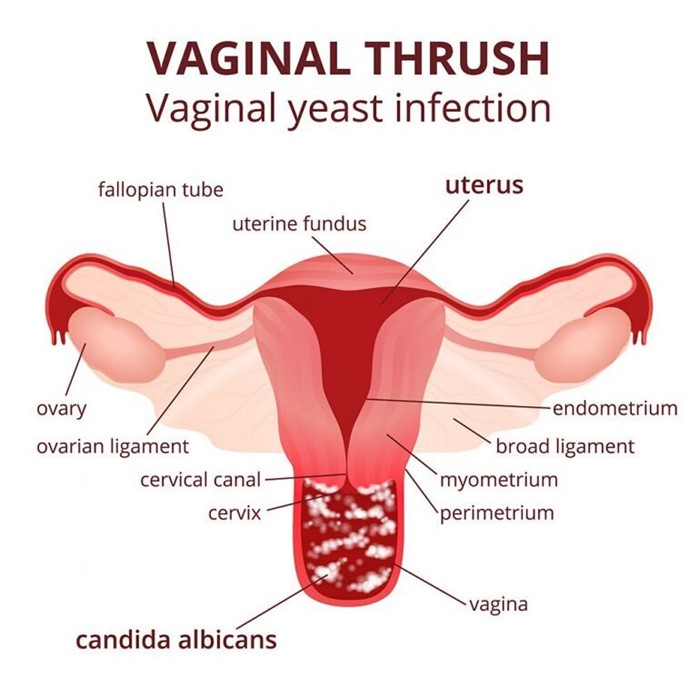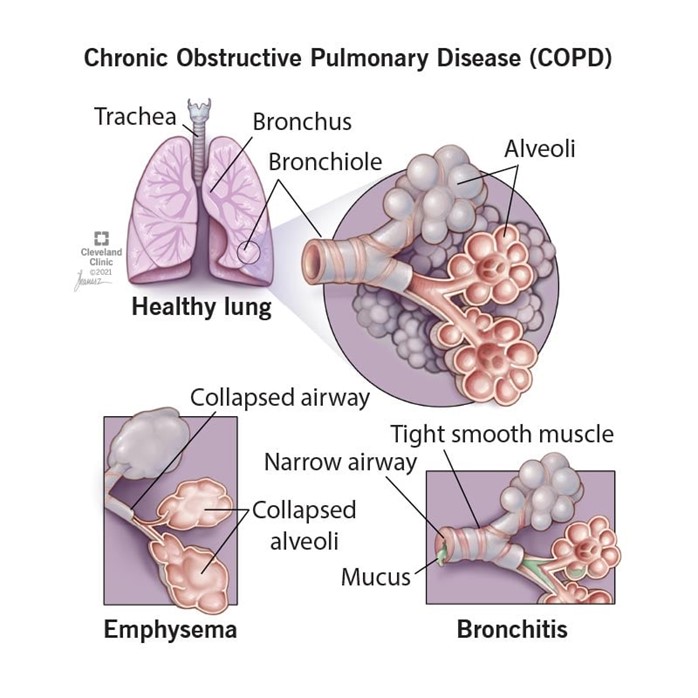Assessment of a female client reveals a thick, white vaginal discharge. She also reports intense itching and dyspareunia. Based on these findings, the nurse would suspect that the client has:
Trichomoniasis
Genital herpes simplex
Candidiasis
Bacterial vaginosis
The Correct Answer is C
Choice A: Trichomoniasis is not the correct answer because it does not match the findings of the client. Trichomoniasis is a sexually transmitted infection (STI) caused by a parasite called Trichomonas vaginalis. It can cause symptoms such as yellow-green or gray frothy vaginal discharge, foul odor, itching, burning, or redness of the vulva or vagina.
Choice B: Genital herpes simplex is not the correct answer because it does not match the findings of the client. Genital herpes simplex is an STI caused by a virus called herpes simplex virus (HSV). It can cause symptoms such as painful blisters or ulcers on or around the genitals, fever, headache, or swollen lymph nodes.
Choice C: Candidiasis is the correct answer because it matches the findings of the client. Candidiasis is a fungal infection caused by a yeast called Candida albicans. It can cause symptoms such as thick, white, cottage cheese-like vaginal discharge, intense itching, burning, or soreness of the vulva or vagina, or dyspareunia (painful sexual intercourse).
Choice D: Bacterial vaginosis is not the correct answer because it does not match the findings of the client. Bacterial vaginosis is a condition caused by an imbalance of the normal vaginal flora (the bacteria that live in the vagina). It can cause symptoms such as thin, gray-white or yellow vaginal discharge, fishy odor, itching, or burning of the vulva or vagina.

Nursing Test Bank
Naxlex Comprehensive Predictor Exams
Related Questions
Correct Answer is D
Explanation
Choice A: A 26-year-old client who has migraine headaches at the start of each menstrual cycle is not the correct answer because they do not have a contraindication for receiving oral contraceptives. Oral contraceptives are pills that contain synthetic hormones (estrogen and progestin) that prevent ovulation and pregnancy. They can also help reduce menstrual cramps, bleeding, and migraines in some women. However, oral contraceptives may increase the risk of stroke in women who have migraines with aura (visual disturbances), so they should be used with caution and under medical supervision.
Choice B: A 28-year-old client who has a history of pelvic inflammatory disease is not the correct answer because they do not have a contraindication for receiving oral contraceptives. Pelvic inflammatory disease is an infection that affects the female reproductive organs, such as the uterus, fallopian tubes, or ovaries. It can be caused by various bacteria, such as chlamydia or gonorrhea, and can lead to infertility, ectopic pregnancy, or chronic pelvic pain if left untreated. Oral contraceptives can help prevent pelvic inflammatory disease by creating a thick cervical mucus that blocks the entry of bacteria into the uterus.
Choice C: A 32-year-old client who has benign breast disease is not the correct answer because they do not have a contraindication for receiving oral contraceptives. Benign breast disease is a term that refers to various noncancerous conditions that affect the breast tissue, such as fibrocystic changes, fibroadenomas, or mastitis. They can cause symptoms such as breast pain, tenderness, or lumps. Oral contraceptives can help reduce the symptoms of benign breast disease by regulating the hormonal fluctuations that influence breast tissue growth.
Choice D: A 38-year-old client who reports smoking one pack of cigarettes every day is the correct answer because they have a contraindication for receiving oral contraceptives. Smoking is a habit that involves inhaling tobacco smoke, which contains harmful substances such as nicotine, tar, or carbon monoxide. Smoking can increase the risk of various diseases such as lung cancer, chronic obstructive pulmonary disease (COPD), or cardiovascular disease. Oral contraceptives can further increase the risk of cardiovascular disease in smokers, especially those who are over 35 years old, by increasing blood pressure, cholesterol levels, and clotting factors. Therefore, oral contraceptives are not recommended for smokers and alternative methods of contraception should be used instead.

Correct Answer is ["A","C","E"]
Explanation
Choice A: Sleep disturbances are the correct answer because they are a symptom of a heart attack observed in women. Sleep disturbances are problems that affect the quality or quantity of sleep, such as insomnia, nightmares, or snoring. They can indicate that the heart is not pumping enough blood and oxygen to meet the body's needs during sleep. About 48% of women who have had a heart attack report having sleep disturbances in the weeks before their event.
Choice B: Syncope is not the correct answer because it is not a symptom of a heart attack observed in women. Syncope is a condition that causes a temporary loss of consciousness due to a drop in blood pressure or blood flow to the brain. It can be caused by various factors such as dehydration, medication side effects, or cardiac arrhythmias. However, it is not a common sign of a heart attack in women, and only about 12% of women who have had a heart attack report having syncope before their event.
Choice C: Unusual fatigue is the correct answer because it is a symptom of a heart attack observed in women. Unusual fatigue is a feeling of extreme tiredness or exhaustion that is not relieved by rest or sleep. It can indicate that the heart is not pumping enough blood and oxygen to meet the body's needs during daily activities. About 70% of women who have had a heart attack report having unusual fatigue in the weeks before their event.
Choice D: Extreme hunger is not the correct answer because it is not a symptom of a heart attack observed in women. Extreme hunger is a feeling of intense or excessive appetite or craving for food. It can be caused by various factors such as diabetes, thyroid disorder, or stress. However, it is not a sign of a heart attack in women, and only about 4% of women who have had a heart attack report having extreme hunger before their event.
Choice E: Arm pain is the correct answer because it is a symptom of a heart attack observed in women. Arm pain is a feeling of discomfort or ache in one or both arms, especially the left arm. It can indicate that the heart muscle is not receiving enough blood and oxygen due to a blocked coronary artery. About 42% of women who have had a heart attack report having arm pain before their event.
Whether you are a student looking to ace your exams or a practicing nurse seeking to enhance your expertise , our nursing education contents will empower you with the confidence and competence to make a difference in the lives of patients and become a respected leader in the healthcare field.
Visit Naxlex, invest in your future and unlock endless possibilities with our unparalleled nursing education contents today
Report Wrong Answer on the Current Question
Do you disagree with the answer? If yes, what is your expected answer? Explain.
Kindly be descriptive with the issue you are facing.
